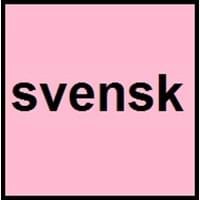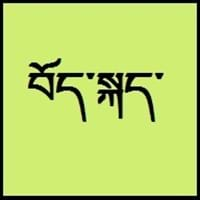Countries
European Union, Finland, Nordic Council, Sweden
China, Nepal
National Language
Sweden
Nepal, Tibet
Second Language
Finland
Not spoken in any of the countries
Speaking Continents
Antartica, Europe
Asia
Minority Language
Australia, Belgium, Canada, France, Germany, Netherlands, Spain, Switzerland, United Kingdom, United States of America
China, India, Nepal
Regulated By
Institute for the Languages of Finland, Swedish Academy, Swedish Language Council
Committee for the Standardisation of the Tibetan Language
Interesting Facts
- In Swedish language, article comes after noun.
- Most of the words in Swedish language began "S" than any other letter.
- Tibetan dialects vary alot, so it's difficult for tibetans to understand each other if they are not from same area.
- Tibetan is tonal with six tones in all: short low, long low, high falling, low falling, short high, long high.
Similar To
Norwegian and Danish Language
Not Available
Derived From
Old Norse Language
Not Available
Alphabets in
Swedish-Aphabets.jpg#200
Tibetan-Alphabets.jpg#200
Scripts
Latin
Tibetan alphabet, Tibetan Braille
Writing Direction
Left-To-Right, Horizontal
Left-To-Right, Horizontal
Hello
hej
བཀྲ་ཤིས་བདེ་ལེགས། (tashi delek)
Thank You
tacka dig
ཐུགས་རྗེ་ཆེ་། (tujay-chay)
How Are You?
hur mår du
ཁྱེད་རང་སྐུ་གཇུགས་བདེ་པོ་ཡིན་པས།
(kayrang kusu debo yimbay?)
Good Night
godnatt
གཟིམ་ལཇག་གནང་དགོས་། (sim-jah nahng-go)
Good Evening
god kväll
དགོང་དྲོ་བདེ་ལེགས།
Good Afternoon
god eftermiddag
ཉིན་གུང་བདེ་ལེགས།
Good Morning
god morgon
སྔ་དྲོ་བདེ་ལེགས། (nga-to delek)
Please
vänligen
thu-je zig / ku-chee.
Sorry
ledsen
ཀོང་དགས་། (gawn-da)
Bye
hej då
ག་ལེར་ཕེབས་། (kha-leh phe)
I Love You
jag älskar dig
ང་ཁྱེད་རང་ལ་དགའ་པོ་ཡོད་ (nga kayrâng-la gawpo yö)
Excuse Me
ursäkta mig
དགོངས་དག བཟོད་དུ་གསོལ། ཐུགས་རྗེ་གཟིགས།
Dialect 1
Dialects
Central Tibetan
Where They Speak
Gabon
China, India, Nepal
Dialect 2
Dialects
Khams Tibetan
Where They Speak
Georgia
Bhutan, China
Dialect 3
Dialects
Amdo Tibetan
Where They Speak
France
China
Speaking Population
Not Available
Second Language Speakers
Not Available
Native Name
Svenska
བོད་སྐད་ (pö-gay)
Alternative Names
Ruotsi, Svenska
Bhotia, Dbus, Dbusgtsang, Phoke, Tibetan, U, Wei, Weizang, Zang
French Name
suédois
tibétain
German Name
Schwedisch
Tibetisch
Pronunciation
[ˈsvɛ̂nskâ]
Not Available
Ethnicity
Swedes, Finland Swedes
tibetan people
Origin
13th Century
c. 650
Language Family
Indo-European Family
Sino-Tibetan Family
Subgroup
Germanic
Tibeto-Burman
Branch
Northern (Scandinavian)
Not Available
Early Forms
Old Swedish
Old Tibetan, Classical Tibetan
Standard Forms
Standard Swedish
Standard Tibetan
Language Position
Not Available
Signed Forms
Tecknad svenska, ("Signed Swedish")
Tibetan Sign Language
Scope
Individual
Not Available
ISO 639 6
Not Available
Not Available
Glottocode
swed1254
tibe1272
Linguasphere
52-AAA-ck to -cw
No data Available
Language Type
Living
Not Available
Language Linguistic Typology
Subject-Verb-Object
Not Available
Language Morphological Typology
Not Available
Not Available
Swedish and Tibetan Greetings
People around the world use different languages to interact with each other. Even if we cannot communicate fluently in any language, it will always be beneficial to know about some of the common greetings or phrases from that language. This is where Swedish and Tibetan greetings helps you to understand basic phrases in Swedish and Tibetan language. Swedish word for "Hello" is hej or Tibetan word for "Thank You" is ཐུགས་རྗེ་ཆེ་། (tujay-chay). Find more of such common Swedish Greetings and Tibetan Greetings. These greetings will help you to be more confident when conversing with natives that speak these languages.
Swedish vs Tibetan Difficulty
The Swedish vs Tibetan difficulty level basically depends on the number of Swedish Alphabets and Tibetan Alphabets. Also the number of vowels and consonants in the language plays an important role in deciding the difficulty level of that language. The important points to be considered when we compare Swedish and Tibetan are the origin, speaking countries, language family, different greetings, speaking population of these languages. Want to know in Swedish and Tibetan, which language is harder to learn? Time required to learn Swedish is 24 weeks while to learn Tibetan time required is 24 weeks.





